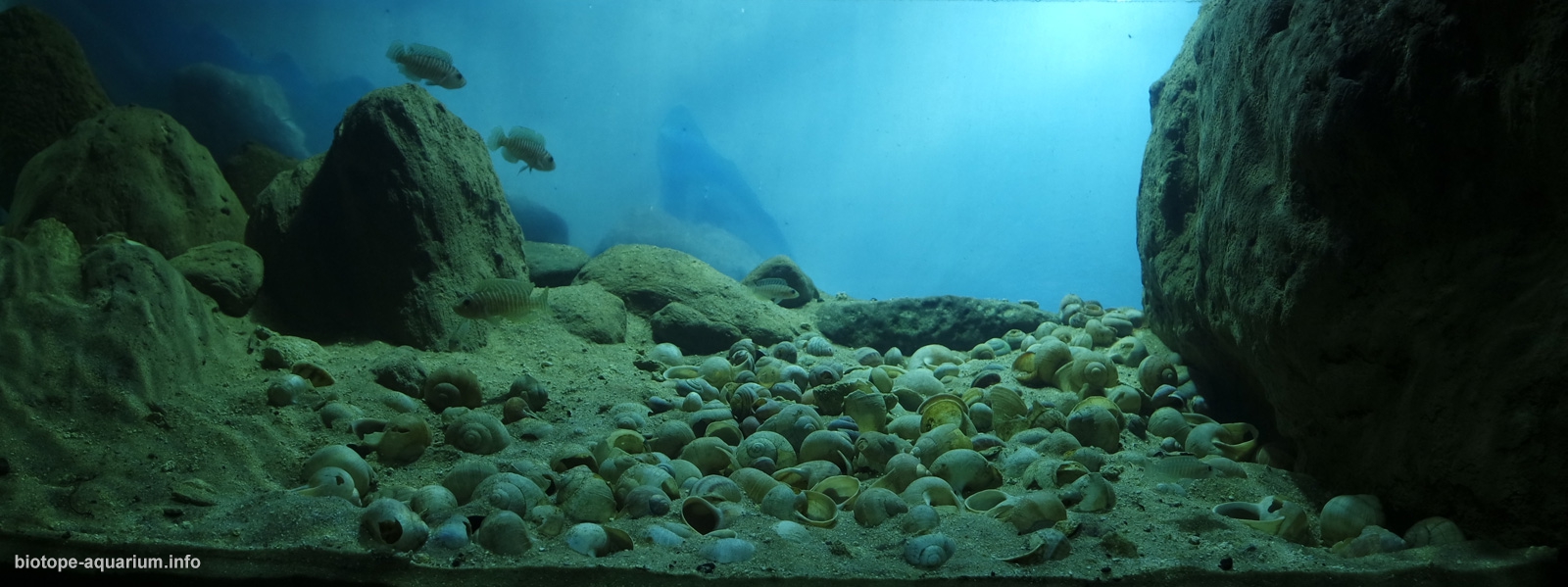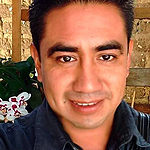Cape Kabogo. Tanganyika Lake. Tanzania
7th place in Biotope Aquarium Design Contest 2018
![]() Poland. Bartłomiej Paśnik
Poland. Bartłomiej Paśnik

Volume: 135 L
Dimensions: 90x50x30 cm
List of fishes: Neolamprologus similis
List of plants: N/A
Description of decorations: The ground is made of a mixture of sand to make it look like the bottom of the lake. The decoration was made of stones, shells and artificial rocks imitating those in nature.
Description of equipment: Aquael Unimax 250, Lighting: LED 40W 6500k.
Water parameters: Temperature is 25°C, pH 8,5-9, GH 10, KH 19.
INFORMATION ABOUT BIOTOPE
Description of the area surrounding the biotope: Lake in East Africa, one of the Great African Lakes, located in the East African rift zone. The lake is divided among four countries , Tanzania, Democratic Republic of the Congo (DRC), Burundi, and Zambia. It covers an area of 34.4 thousand. km², is the longest freshwater lake in the world and the deepest African lake. The lake is located at an altitude of 773 m above sea level. The average depth is 570 m, while the maximum reaches 1435 m. The lake is located in the tropical climate zone. The average annual rainfall is 200mm. Average annual temperature around 20C. Cape Kabogo is located in Tanzania on the eastern shore of the lake (5 ° 27’42 “S, 29 ° 44’50” E). The described biotope is located in the zone of Litoral.
Description of the underwater landscape of the biotope: The bottom is covered with large stones. In the deeper parts the stones are getting smaller and the bottom is covered with sand, mud and clusters of shells, creating an ideal place for small cichlids such as Lamprologus similis, Lamprologus callipterus. Water in lake is very clear, transparency is about 20m.
Description of the parameters of the habitat: The lake’s water is alkaline with a pH of around 9 at depths of 0–100 m, Below this it is around 8.7, gradually decreasing to 8.3—8.5 in the deepest 0parts. Surface temperatures generally range from about 24 °C.
List of fishes and invertebrates occurring in the nature biotope: lamprologus similis, Lamprologus callipterus, Cyathopharynx furcifer, Petrochromis sp., Neolamprologus leleupi.
List of plants found in the nature biotope: N/A
Threats to the ecology: Because of increasing global temperature there is a direct correlation to lower productivity in Lake Tanganyika.[13] Southern winds create upwells of deep nutrient-rich water on the southern end of the lake. This happens during the cooler months (May to September). These nutrients that are in deep water are vital in maintaining the aquatic food web. The southerly winds are slowing down which limits the ability for the mixing of nutrients. This is correlating with less productivity in the lake.
Sources of information:
http://www.malawi.si/
https://www.cichlidae.com/
http://klub-tanganika.pl/
https://www.google.com/maps/
Book: “Pielęgnice jeziora Tanganika” – Roman Pawlak/Adam Adamski
Comments of the members of the jury of Biotope Aquarium Design Contest 2018
Plenty of space and hideouts for fish, well managed visual depth, not too bright illumination, and blue background imitating water column far away. Very interesting small tank, which would provide lots of observations of fish behaviour.

It is a very good work, a real kingdom of shell Lamprologus. It was shot very well. You can feel depth and boundless water horizon. And it is correct that the author used only one species. Lamprologus feel themselves masters of this territory, and nothing prevents them from enjoying life and reproduce.

The main photo looks like a photo of a part of the nature biotope. The effects used and the arrangement of the elements give us this great view. Good job!
